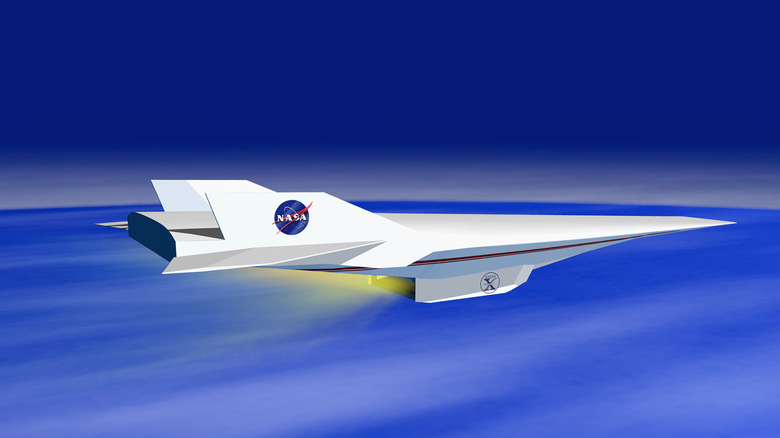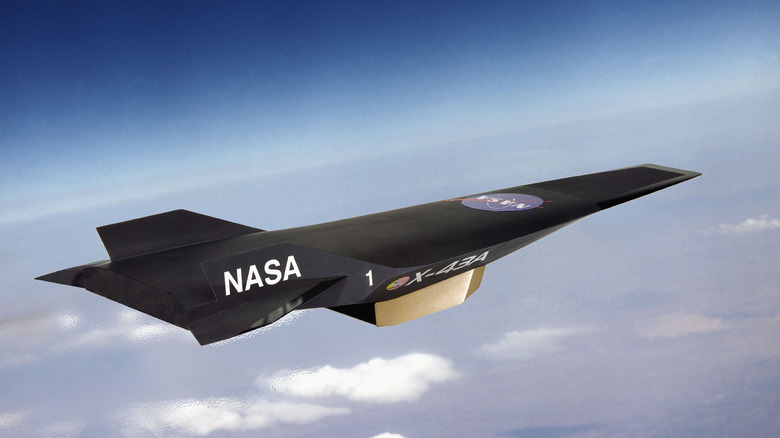What Is A Scramjet, And How Does It Work?
Building a jet engine yourself likely wouldn't be very easy, but the basic principle of how a jet engine works is fairly simple. Your average jet engine uses a series of fans to inhale air. That air is then compressed and injected with a fuel and set alight. The force of that igniting gas is forced out the back of an engine, producing thrust that moves the jet forward. Most jet-powered aircraft move through the air at great speeds using this principle.
Even modern turbojet and turbofan jet engines rely on a large array of complex moving parts to spin up the fans, compress the air, ignite the fuel-air mixture, and get moving. Ramjets remove all moving parts entirely and instead of using mechanical means to suck air in, rely on the speed of the craft itself to compress air and move it through the engine. Because they produce no energy sitting still, objects equipped with a ramjet need a flying start, usually provided by another aircraft to get working. "Scramjets" or super sonic combustion ramjets, ratchet up the speed quite a bit.
Scramjets are at the bleeding edge
According to NASA, scramjets operate by forcing air through the engine at well over the speed of sound for the entire process of combustion. Theoretically, scramjet-powered objects could reach speeds as high as 15 times the speed of sound (over 11,000 miles per hour). However, the fastest scramjet ever produced, the unmanned X-43A, reached speeds of 6,800 miles per hour (about Mach 9.6) in 2004. That's over four times faster than an F-22 Raptor fighter jet, and about 11 times faster than the first fighter jet.
The aircraft itself looked kind of like a surfboard with wings, and modern science is still years away from developing an scramjet powered aircraft that regular people instead of NASA test pilots will get to experience. To the public's knowledge, the X-43A is one of very few scramjet-powered craft ever flown, and any further capabilities are firmly in the theoretical realm. Still, it's hard not to marvel at the possibilities of future scramjet aircraft that can reach (literally) astronomical speeds.

